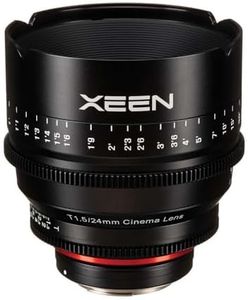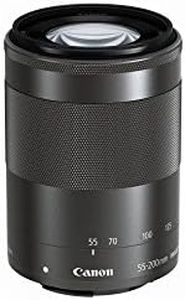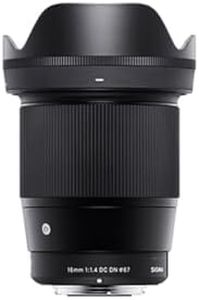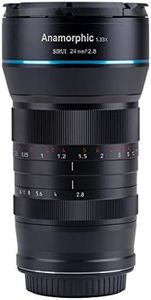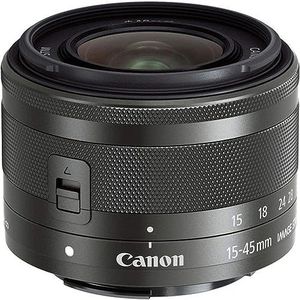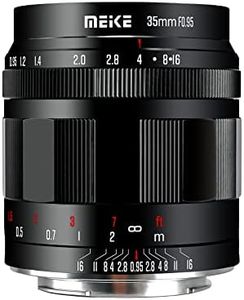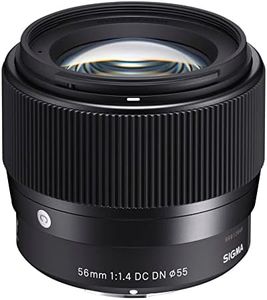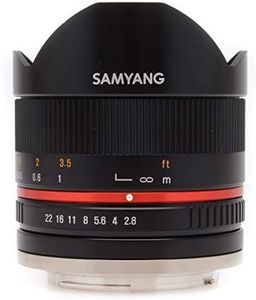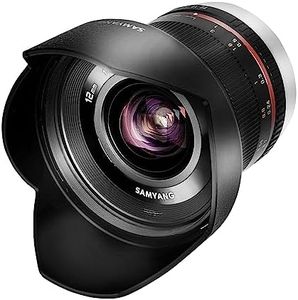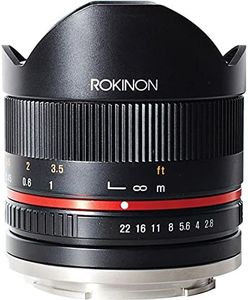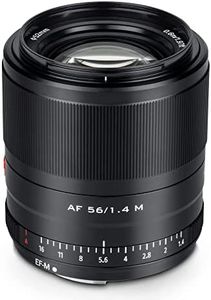We Use CookiesWe use cookies to enhance the security, performance,
functionality and for analytical and promotional activities. By continuing to browse this site you
are agreeing to our privacy policy
10 Best Ef M Lenses
From leading brands and best sellers available on the web.Buying Guide for the Best Ef M Lenses
Choosing the right EF-M lens for your camera can really enhance your photography experience. EF-M lenses are designed specifically for Canon's mirrorless cameras with an EF-M mount. When picking a lens, it’s important to think about what kind of photos you want to take, such as portraits, landscapes, or action shots. Understanding the key features of lenses will help you get images that match your creative vision.Focal LengthFocal length is measured in millimeters (mm) and determines how much of a scene your lens can capture. A lower number (like 11mm-22mm) gives you a wide-angle view, great for landscapes and architecture. A mid-range (like 32mm) is closer to what your eye naturally sees, making it perfect for portraits and general use. Higher numbers (like 55mm-200mm) zoom in further, allowing you to photograph distant subjects such as wildlife or sports. Think about what you shoot the most and choose a focal length that fits: wide for scenery, middle for everyday, or long for distant subjects.
Aperture (f-number)Aperture controls how much light the lens lets in and is represented by f-numbers, like f/1.4 or f/6.3. A lower f-number (wider aperture) lets in more light, which helps in low-light settings and creates a nice blurry background for portraits (known as bokeh). Higher f-numbers (narrower apertures) let in less light but keep more of your scene sharp, which is good for landscapes. If you want to shoot in darker places or love blurry backgrounds, a lens with a low f-number is a good pick. For general bright-light use or landscapes, a higher f-number is fine.
Image Stabilization (IS)Image stabilization helps reduce blur caused by small movements when holding the camera. Some EF-M lenses include this feature. If you plan to take photos in low light, without a tripod, or with longer focal lengths, IS can make a big difference in sharpness. If most of your photos will be in daytime or with a tripod, stabilization is less crucial.
Autofocus Motor TypeThe autofocus motor determines how quickly and quietly the lens can focus. Some EF-M lenses use stepping motors (STM), which are smooth and quiet—ideal for video and general use. Other lenses might use different motors, which can be faster or slower. If you plan on shooting a lot of video or want quiet focusing, look for an STM lens. If you only do still photos, any autofocus type will usually work well.
Size and WeightThe size and weight of a lens can affect how easy it is to carry your camera around and how comfortable it is to use for long periods. Compact and lightweight lenses are easy to carry for travel or street photography. Larger, heavier lenses often offer longer zooms or wider apertures but can be tiring to handle all day. Consider when and where you will use your camera and choose a size that fits your lifestyle.
CompatibilityNot all Canon lenses fit all Canon cameras. EF-M lenses are specifically made for EF-M mount cameras, which are Canon's older mirrorless series. If you have an EF-M camera, these lenses fit without adapters. If you plan to upgrade cameras in the future, keep in mind EF-M lenses don’t fit newer Canon mirrorless models (RF mount) or older DSLRs. Double-check your camera mount to make sure you’re getting lenses that fit your model.
